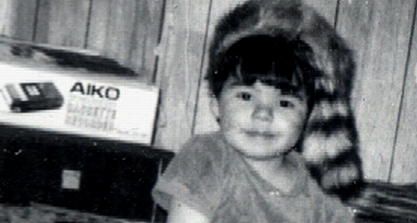Dan Dennet lecture found at TED Talks.
--------------------------------------------------------------------------------------------------
Native Artstuff:
Benjamin Trueblood makes music by listening to his surroundings. (Mp3 sample at site.)
"...the dreamlike state of close observation, the rapid juxtapositions between the natural and the manmade, and the cyclical elegance of decay—could just as easily describe the sound art that Trueblood creates as Feltbattery as it does our morning in the woods.
Feltbattery's most recent album, It Had Wings, draws heavily upon field-recorded birdsong to inform minimalist collage patterns. Trueblood blends his field recordings with sparse instrumentation (including flute and charango) to create layered, hypnotic loops..."
---
DrawnOnRock, a blog from folks trekking through the southwest petroglyph area.
---
Keepers of the Sacred Tradition of Pipemakers

Red medium buffalo pipe with pine stem by B. Bryant
---
My mom's favourite powwow to visit, the Shakopee Mdewakanton Sioux Community Wacipi. We'll be going down to camp, hang out and reconnect; August 17-19, 2007, Prior Lake, MN. Maybe play a little bingo.
;-)
--------------------------------------------------------------------------------------------------
(Old) Winnipeg Bingorage pics; winter 2005-2006:







--------------------------------------------------------------------------------------------------
Random news resources and stuff:
D1ck Ch3n3y Leaves no tracks. An article discussing the vice's negative influence on the environment.
---
IndigenousPortal is looking for editors (document download).
"The Indigenous Portal is an outcome of the World Summit on the Information Society (WSIS . WSIS was a two-phase series, United Nations (UN) sponsored summit about information and communication. The Geneva Summit in December 2003 laid the foundations with a Declaration of Principles and a plan of action. The Tunis Summit aimed to monitor and evaluate progress on the action plan and devise an agenda that will target goals for achievement by 2015. From these events came the WSIS Declaration and Plan of Action, as well as the Declaration and Plan of Action of the Global Forum of Indigenous Peoples and the Information Society. "
---
International Indian Treaty Council Myspace page.
"OBJECTIVES
* To seek, promote and build official participation of Indigenous Peoples in the United Nations and its specialized agencies, as well as other international forums.
* To seek international recognition for Treaties and Agreements between Indigenous Peoples and Nation-States.
* To support the human rights, self-determination and sovereignty of Indigenous Peoples; to oppose colonialism in all its forms, and its effects upon Indigenous Peoples.
* To build solidarity and relationships of mutual support among Indigenous Peoples of the world.
* To disseminate information about Indigenous Peoples’ human rights issues, struggles, concerns and perspectives.
* To establish and maintain one or more organizational offices to carry out IITC’s information dissemination, networking and human rights programs."
---
Indigenous Mapping Network.
"The Indigenous Mapping Network, an affiliate of the Seventh Generation Fund, is an organization set up to help empower native communities by giving them tools they need to protect, preserve, and enhance their way of life within their aboriginal territories. We also are designed to be a conduit for native individuals and groups to meet each other in order to build relationships and assist one another in accomplishing sovereign goals. The current leaders of the network are fluent in modern mapping technologies and are concerned about how native groups approach, and are approached by, modern mapping ways and how they differ from traditional "mapping" ways of explaining one's relation to place and space. It is our interest to bridge the gap between modern mapping technologies and traditional "mapping" practices by training indigenous groups in modern mapping ways as well as encouraging traditional "mapping" practices. It has been noted that more land has been taken away from native people by maps than by weapons. So often native lands have been and are manipulated based on an outsider’s view of where those lands "should" be and as a result the land base of an indigenous community is altered. It is our goal to let outsiders know that when it comes to learning where indigenous people’s lands are, they should let those people do the mapping, no matter how rudimentary the mapping is perceived. The IMN will lead the effort in being advocates for indigenous people and the mapping issues that take place on native lands by governments, academics, scholarly societies, and the technological world."
This view is particularly of importance in the land-claim history, since "administrative" reduction of native lands is often a "fait accompli" in distant offices resulting in multiple tribes being forced off their treaty lands and forced to live on others treaty lands; like what happened to the Rainy River First Nations and some Northwest Angle First Nations at the turn of the twentieth century.
--------------------------------------------------------------------------------------------------


No comments:
Post a Comment